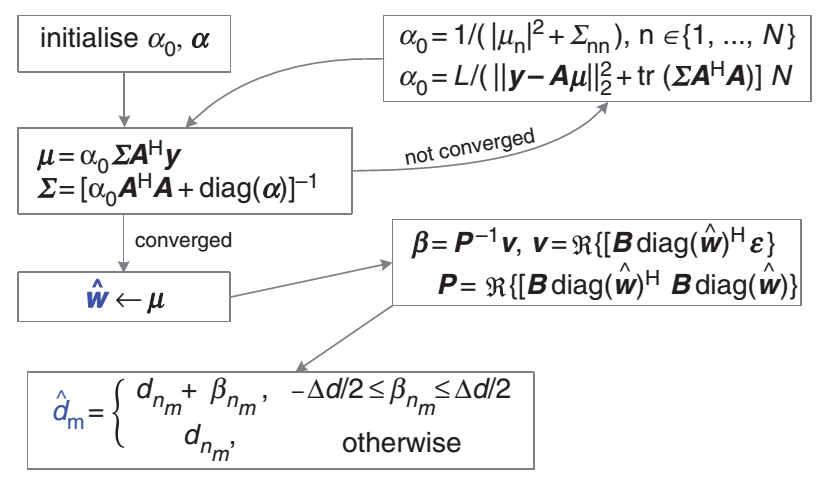Pattern synthesis for antenna arrays with a minimum number of elements is a problem of great importance in many applications, like radar, remote sensing and wireless communication. Among pattern synthesis techniques, non-uniformly spaced arrays have potential advantages with respect to uniform arrangements such as decreased mainlobe width and sidelobe suppression.
A pattern synthesis method based on Bayesian compressive sampling (BCS) with sparse non-uniform linear arrays has been proposed. The method has the significant advantages of flexibility and computational efficiency. However, the BCS-based method has limitation and may induce an unideal approximation to the optimal element position. As a matter of fact, the deviation caused by the fixed grid has been noticed in many problems such as direction-of-arrival estimation, spectral estimation and signal reconstruction.
Recently, a novel off-grid synthesis method is proposed by researchers from the Key Laboratory of Information Technology for Autonomous Underwater Vehicles of the Chinese Academy of Sciences. This method can estimate the sparse array element positions more accurately and synthesize the pattern with fewer errors than the existing BCS-based method.
Precisely, the new pattern synthesis method can guarantee the sparsity of the sparse non-uniform linear array due to the property of BCS and provide a more accurate fit of the given pattern (e.g. Chebyshev, Taylor-Kaiser) than the conventional BCS synthesis.
The detail of this off-grid BCS approach is shown in Fig. 1.

Fig. 1 Off-grid pattern synthesis method based on BCS (Image by JIN)
A high-accuracy and maximally sparse pattern synthesis method is proposed. Given a set of L samples of the reference pattern, the proposed method converts the pattern synthesis problem into the sparse signal restoration from an overcomplete set (N ≫ L>M). Owing to the sparsity of the BCS-based algorithms, the reference pattern can be synthesized by a much smaller set of sparse non-uniform array elements than the uniformly spaced linear array. Reduction of the array element number will usually make the array system more efficient.
Furthermore, the proposed method utilises the off-grid model to estimate array element positions dm, m = 1, …, M, more accurately than the conventional model which uses a fixed uniform position grid. Another advantage of the proposed algorithm is that the BCS-based algorithms can be more efficiently achieved by a fast RVM than conventional CS algorithms.
Compared with existing state-of-the-art pattern synthesis methods, this off-grid BCS method for pattern synthesis has the advantages of sparsity, accuracy and high efficiency.
Funding for this research came from the National Natural Science Foundation of China (Grant Nos. 61222107 and 61471352).
Reference:
LIN Jincheng, MA Xiaochuan, YAN Shefeng and JIANG Li. Pattern Synthesis of Sparse Linear Array by Off-Grid Bayesian Compressive Sampling. Electronics Letters (Vol. 51, No. 25, pp. 2141-2143, 10 December 2015). DOI: 10.1049/el.2015.2455
Contact:
LIN Jincheng
Key Laboratory of Information Technology for Autonomous Underwater Vehicles, Institute of Acoustics, Chinese Academy of Sciences, 100190 Beijing, China
Email: ljcmym@163.com


